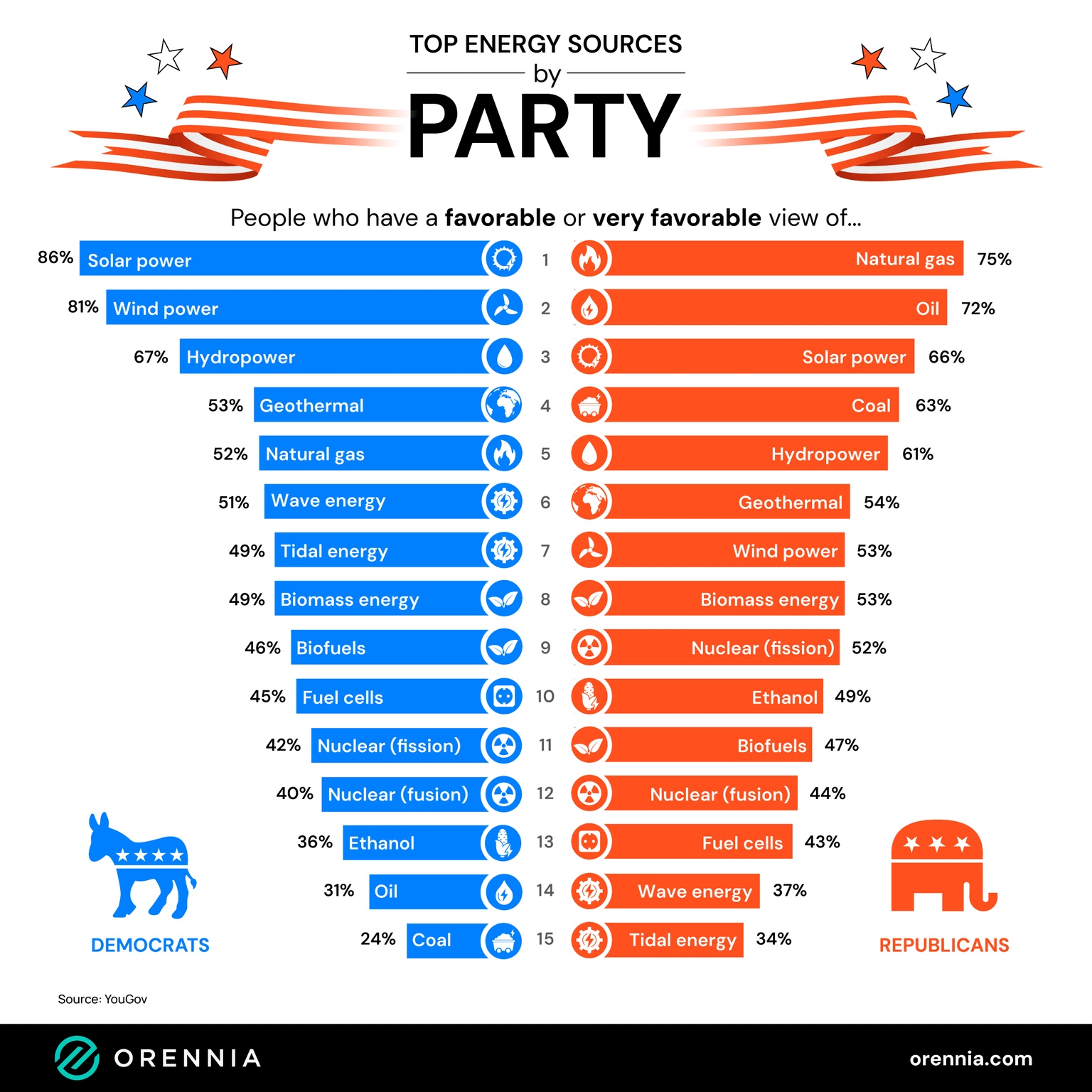
Aaron Foyer
Vice President, Research and Analytics

Vice President, Research and Analytics

In late 2022, YouGov surveyed 1,000 American on their view of 17 different types of energy. The poll reveals distinct differences in how Democrats and Republicans view various energy sources. As you might expect, there was a strong divide between the parties.
The poll underscores the stark contrasts in energy preferences between Democrats and Republicans, highlighting the challenge of creating unified energy policies. While both parties favor renewable energy to some extent, the level of support and enthusiasm varies significantly.
Note: A “net view” is a metric used in surveys to gauge the overall sentiment toward a specific subject. It’s found by taking the percentage of respondents who have a positive view and subtracting the percentage who have a negative view. This results in a net score that indicates whether the general sentiment is more favorable or unfavorable.
For example, if 70% of people view solar power positively and 10% view it negatively, the net positive view would be +60. This score helps summarize overall attitudes in a clear, concise manner.
Poll: How Democrats and Republicans view energy sources differently
Data-driven insights delivered to your inbox.